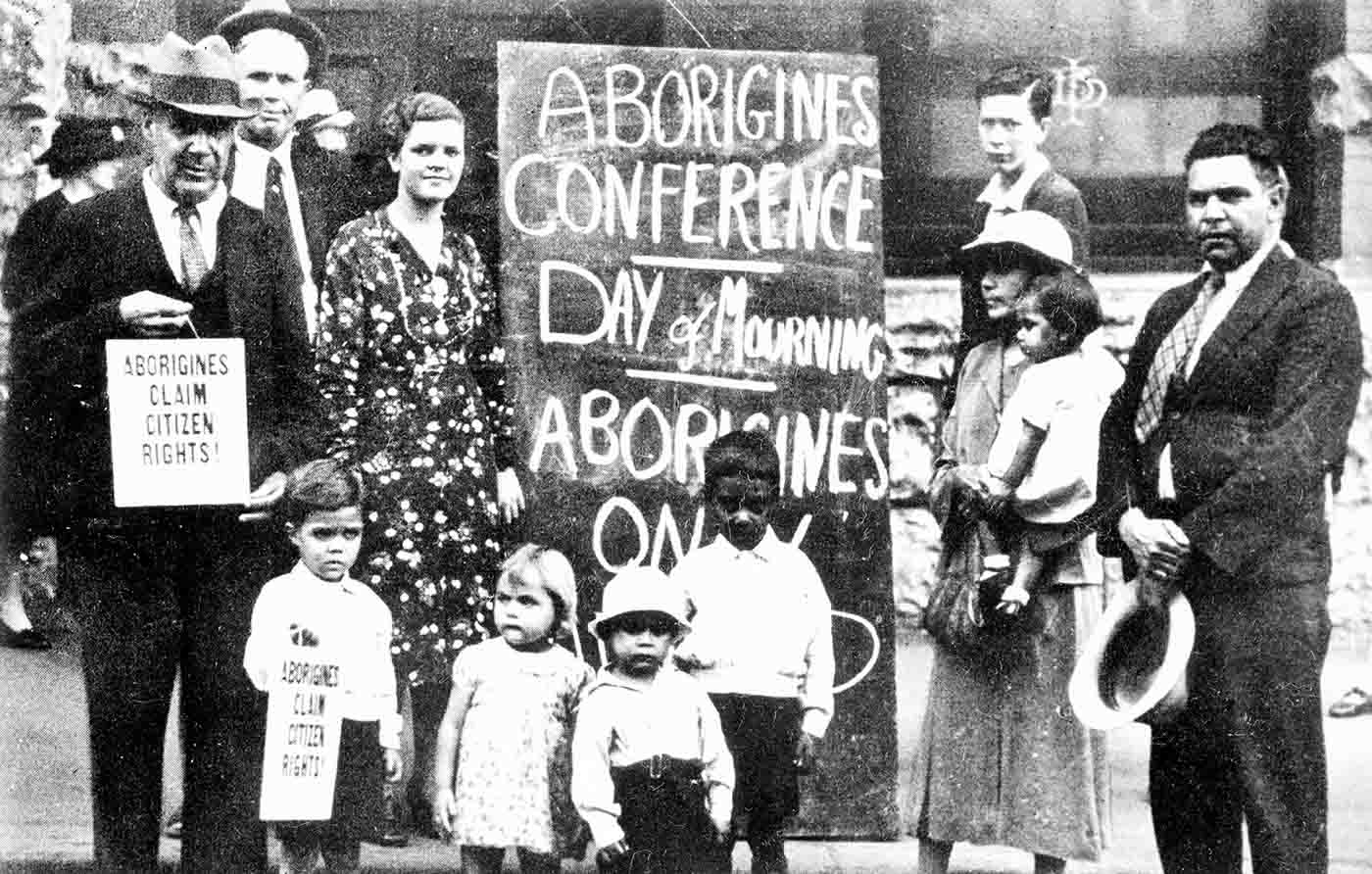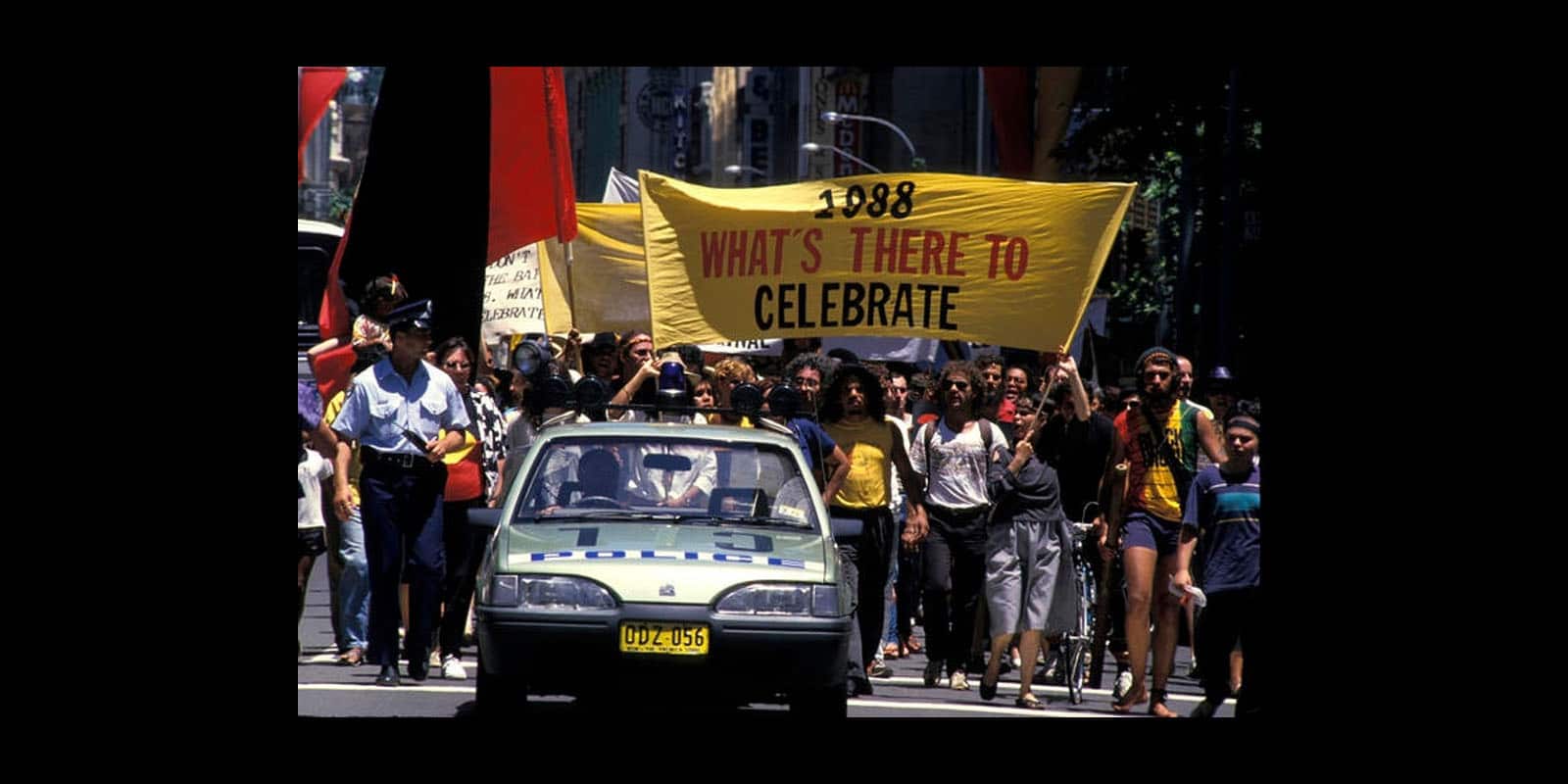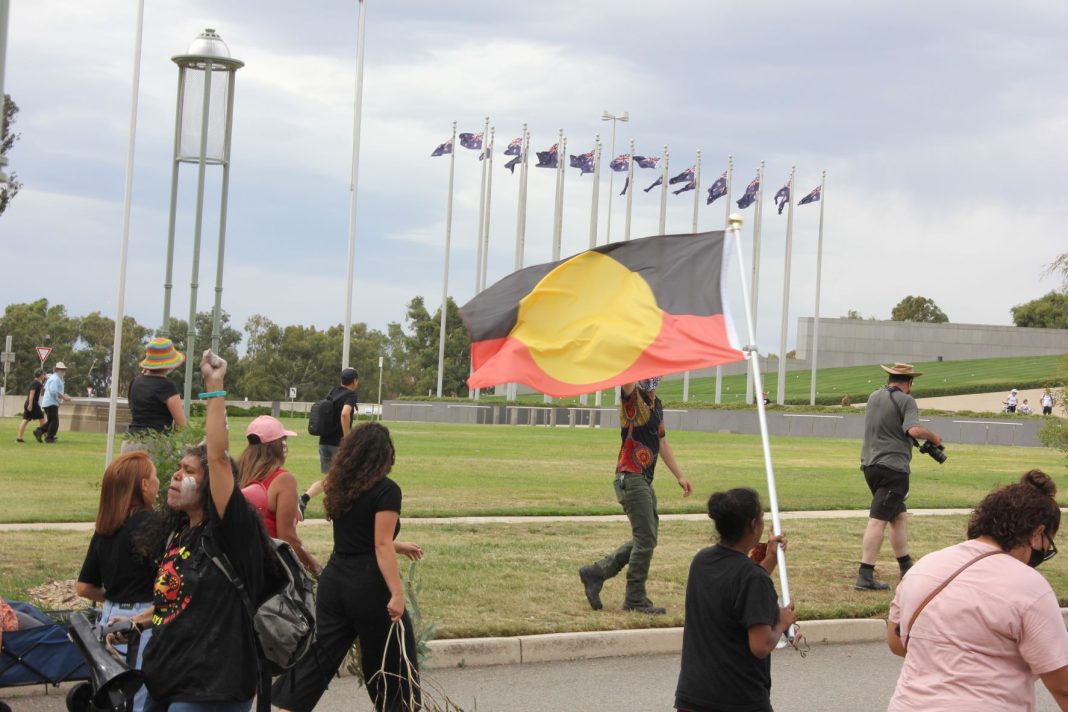As 26 January approaches this year, it’s important to be aware of the significant historical events that have taken place on Australia’s national day and understand the reasoning and rhetoric behind the division over the date.
Aboriginal Australians have long protested Australia Day being celebrated on the contentious date, as 26 January 1788 marked the beginning of the colonisation, dispossession, and genocide of Indigenous peoples.
A quote regarding Australia Day from one of Australia’s most respected and well-known politicians occurred in 1888, when the then Premier of New South Wales, Sir Henry Parkes, was asked what centenary celebrations were planned for Indigenous Australians on that day, to which he responded, “And remind them that we have robbed them?”
This date has been divisive for Australians since the beginning of its celebrations, and the campaign to Change the Date has been debated for over a century but has only gained widespread national attention in the past few decades.
Below is a brief timeline of notable historical events that took place on 26 January from the beginning of British settlement on Australia’s east coast.
26 January 1788
The British flag was raised for the first time on Australian shores by Captain Arthur Phillip on this day in 1788 after 11 convict ships landed in Sydney Cove, New South Wales, taking formal possession of the new colony. The Aboriginal name for Sydney Cove is Warrane.
26 January 1804
First Landing Day or Foundation Day were the names first given to 26 January and 1804 was the year the Sydney Gazette, early almanacs, and calendars began referring to it as such. People in Sydney began commemorating the day by having an anniversary dinner and celebratory drinks, especially amongst emancipists.
26 January 1808
Known as the ‘Rum Rebellion’, officers and men of the NSW Corps arrested Governor William Bligh in Government House in Sydney, and the colony was placed under military rule for the first and only time in Australia’s history.
26 January 1818
The day was officially acknowledged as a public holiday in Sydney for the people of NSW by Governor Macquarie.
26 January 1838
The massacre at Waterloo Creek (near Moree NSW) took place on 26 January 1838 and is considered the Gamilaroi people’s darkest day. Official records say up to 50 Aboriginal people were killed, but the number is believed to be in the hundreds. The massacre was in retaliation to the spear wound of a mounted police trooper two hours earlier. Twenty-six police on horseback, accompanied by several stockmen and settlers, were the perpetrators of the massacre.
26 January 1888
On its centenary celebration, Aboriginal leaders boycotted the celebrations of Foundation Day, although the protest was unnoticed and unreported within the wider Australian community.
26 January 1938
During Australia Day celebrations in 1938, a re-enactment of Captain Arthur Phillips’ landing in Sydney Cove was organised for the event’s 150th anniversary. When Aboriginal people living in Sydney refused to participate in the re-enactment, organisers brought in Menindee men from western NSW to take part. The Aboriginal men were locked up at the Redfern Police Barracks stables until the event and were forced to run up the beach away from the British, which is an inaccurate version of events. Film footage from the re-enactment shows a clear unwillingness to participate by the Menindee men.
Within the Australian Hall in Sydney, while the re-enactment was taking place, a conference was held for Indigenous people only, with only the exception of two white policemen and two journalists. The assembly declared 26 January to be a Day of Mourning; for the loss of country, freedom, self-determination, and the deaths of so many Indigenous people at the hands of colonisation. The Aboriginal Conference were also seeking full rights as Australian citizens and is known to be the beginning of the modern Aboriginal political movement. A silent protest was also held in the streets of Sydney where over 1,000 Indigenous people attended the march.

26 January 1949
The Nationality and Citizenship Act 1948 was passed and came into effect on Australia Day in 1949, marking the use of the words ‘Australian citizen’ for the first time in any legislation. Technically, Aboriginal and Torres Strait Islander people were now considered Australian citizens in their own country under the Act, although they gained little from the legislation as they were still unable to vote and did not receive equal pay.
26 January 1972
Four Aboriginal men began a peaceful protest underneath a beach umbrella on the lawns opposite [Old] Parliament House in Canberra on 26 January 1972. The men established themselves as the Aboriginal Tent Embassy and were protesting the McMahon Government’s approach to land rights. In 1992 on the 20th anniversary of the original protests, the embassy was permanently established on the lawns outside Old Parliament House and is still a symbol of protest today.
26 January 1988
For the bicentenary celebration of the arrival of the First Fleet, the Tall Ships project took place within the Sydney Harbour re-enacting the voyage of European settlement.
The 1988 Bicentenary protest, also known the Bondi Pavilion protest, was carried out at the same time, with more than 40,000 Aboriginal people and non-Aboriginal supporters filling Sydney’s streets for what was the biggest march held in the city at the time.

26 January 1992
The very first Survival Day concert was held on 26 January 1992 in Sydney to counter Australia Day celebrations, and to emphasise Aboriginal Australians’ cultural survival and resilience.
26 January 1994
All states and territories officially made 26 January a public holiday to celebrate Australia Day.
26 January 2013
The Aboriginal flag was raised alongside the Australian flag on the Sydney Harbour Bridge for the very first time during the WugulOra ceremony.
Canberra Daily would love to hear from you about a story idea in the Canberra and surrounding region. Click here to submit a news tip.



